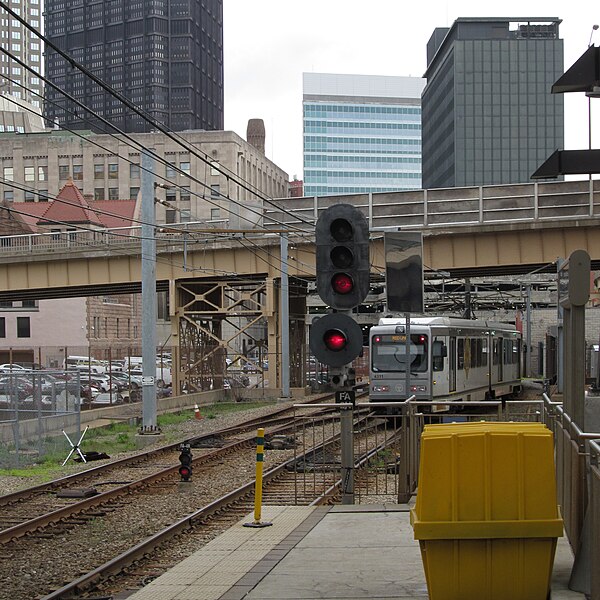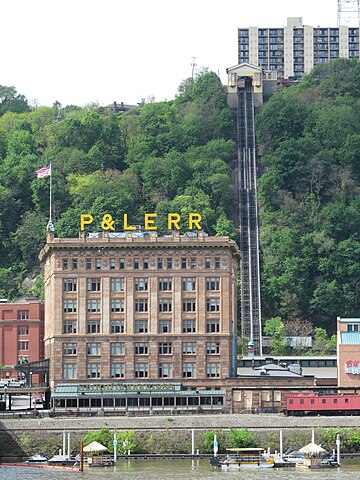
A 4300-series CAF trolley leaves First Avenue on its way into the old railroad tunnel that leads to Steel Plaza. Pittsburghers count First Avenue as part of the “subway” section of the system (which in Pittsburgh terminology includes the stations from Station Square to Allegheny), but it is an elevated station; not until further in does the line actually go underground.






















